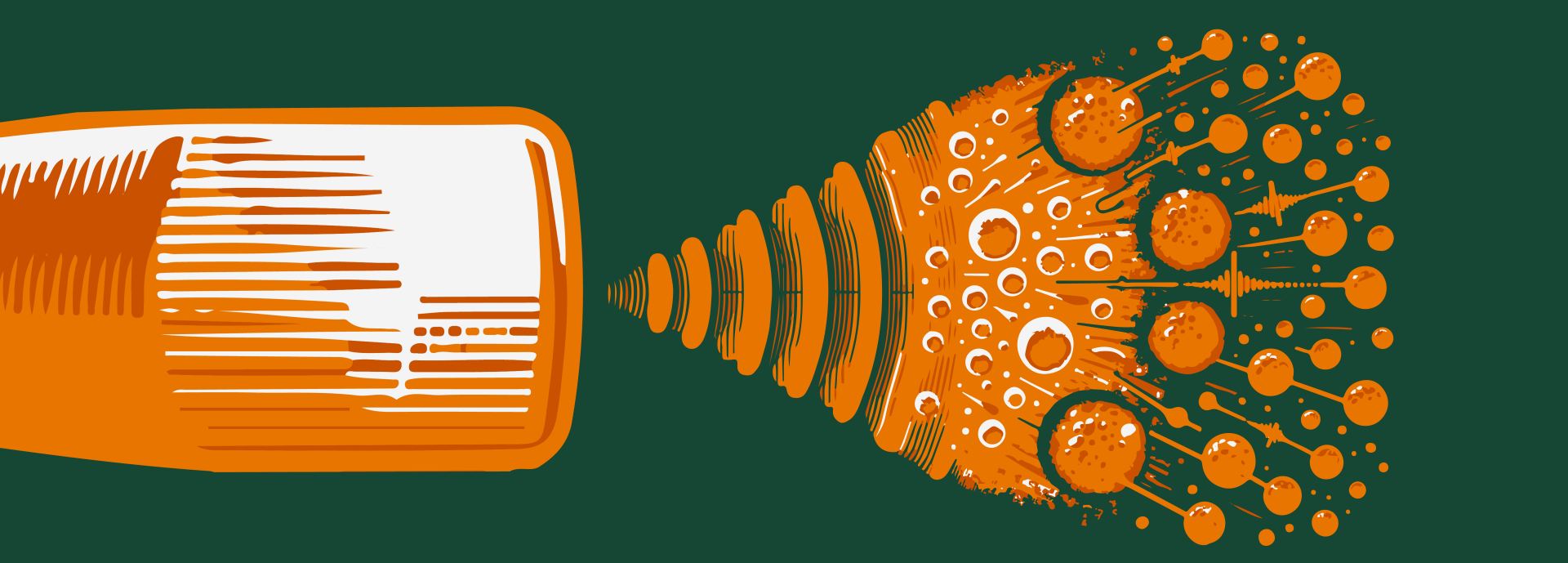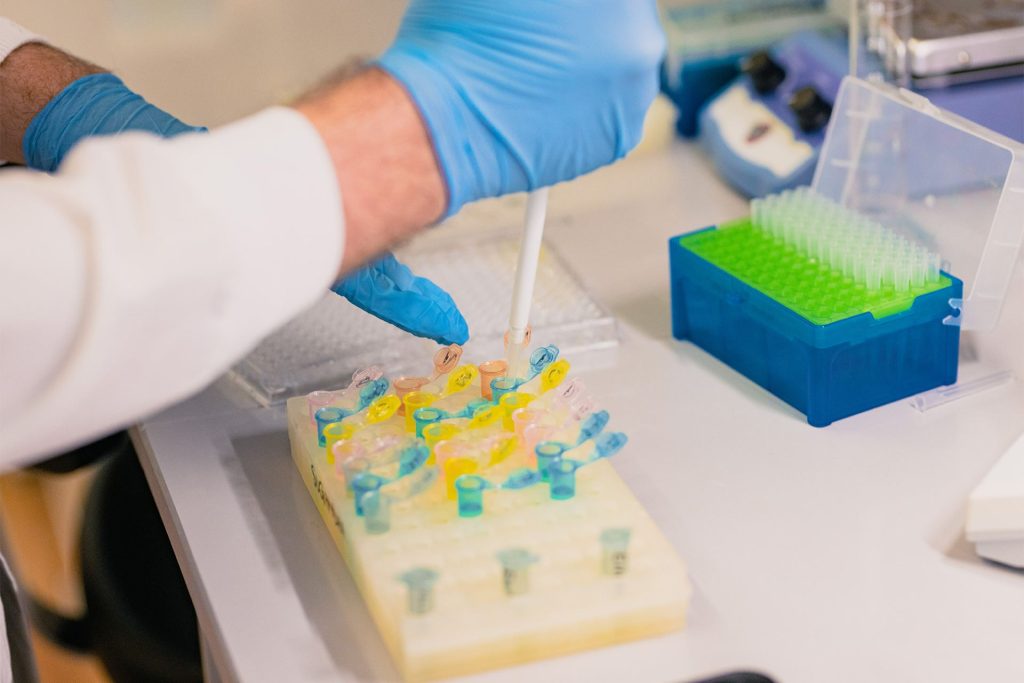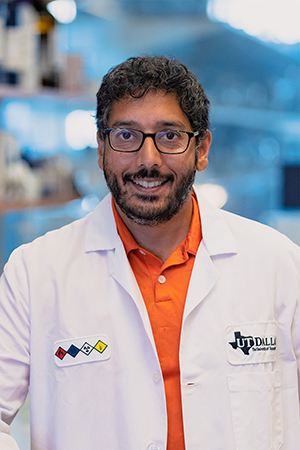
Researchers Harness Microbubbles to ‘Pretreat’ Neuroblastoma Tumors

University of Texas at Dallas researchers have developed a potential gene therapy to “pre-treat” neuroblastoma tumors in order to make chemotherapy more effective.
Neuroblastoma, a pediatric cancer that forms in immature nerve cells, has a 50% five-year survival rate for patients with high-risk tumors. In a study published online June 4, 2023 in Theranostics, UT Dallas researchers and their colleagues reported that their gene therapy approach slowed tumor growth in mouse models of the disease.

The process works by expanding the blood vessels surrounding a tumor to enhance delivery of drugs. Researchers discovered that the gene therapy also made the tumor cells more receptive to chemotherapy. More research is needed before the method becomes available to patients.
“We’re very excited about this research. Essentially, we’re increasing blood flow to the tumor right before applying chemotherapy,” said Dr. Shashank Sirsi, co-corresponding author and associate professor of bioengineering in the Erik Jonsson School of Engineering and Computer Science. “We are finding that this also increases the permeability of the tumor, so we can get more medication inside.”
The gene therapy involves injecting microbubbles — gaseous spheres as small as 10 micrometers in diameter — into the bloodstream. The microbubbles deliver plasmid DNA programmed to express inducible nitric oxide synthase (iNOS), which expands blood vessels. When exposed to ultrasound, the microbubbles burst and release the iNOS plasmids.
In the study, researchers administered chemotherapy after the blood vessels expanded. They discovered that in addition to increasing blood flow to tumors, the gene therapy caused iNOS expression in the tumor cells, making the chemotherapy more effective.
“Instead of escalating the dosage and trying to get the tumors to regress, … we can pretreat the tumors and use
the same or even lower drug dosages and get the same
or even better responses.”Dr. Shashank Sirsi, associate professor of bioengineering in the Erik Jonsson School of
Engineering and Computer Science
Sirsi had studied neuroblastoma for years before his son J.D. was diagnosed with the disease in 2021. Now three years old, J.D. has recovered. The experience helped Sirsi — who works in a lab rather than with patients — better understand what children go through during treatment. As a result, he has focused on reducing the amount of the drugs used to treat pediatric cancers to prevent or reduce side effects.
“Instead of escalating the dosage and trying to get the tumors to regress, which is the common practice, we think we can pretreat the tumors and use the same or even lower drug dosages and get the same or even better responses,” Sirsi said. “With neuroblastoma and other aggressive childhood cancers, the focus is on treating the cancer, but what about the side effects of chemotherapy and radiotherapy, especially in young children? This is a big problem.”
J.D. is thriving, Sirsi said. The toddler loves swimming, playing with trucks and magnetic building tiles.
“Having him go through chemotherapy and understanding how these treatments are done, I have more of a mindset about how any treatment is going to be implemented in a clinical setting,” Sirsi said. “This is something that as an engineer constructing these molecules in a lab, I probably wouldn’t have been thinking about before.”
One of Sirsi’s goals was to use a nonviral vector, or delivery method, for gene therapy. Gene therapies often are delivered using a live or an inactive virus. Although this method is the most effective approach, there is a risk of long-term toxicity from viral vector insertion in healthy cells, he said.
“I’m skeptical of putting viral vectors into children,” Sirsi said. “If you can use a nonviral therapy and it’s effective — like our microbubbles — then it’s a much better strategy.”
Sirsi said the approach could be applied to other cancers. He plans to do further research to determine whether it can be used with other types of cancer treatments including radiotherapy and immunotherapy.
Neuroblastoma Research in the News
Medical Xpress
Team Develops Gene Therapy to ‘Pretreat’ Neuroblastoma Tumors
WFAA
UT Dallas Bioengineer’s Motivation: Saving His Own Son
Spectrum News
UT Dallas Professor Gains Better Understanding of a Pediatric Cancer After Son’s Diagnosis
UT Dallas researchers who participated in the study were bioengineering alum Aditi Bellary PhD’21, molecular and cell biology alum Chance Nowak PhD’21, and Dr. Leonidas Bleris, professor of bioengineering and a Cecil H. and Ida Green Professor in Systems Biology Science.
The study also included researchers from The University of Chicago Pritzker School of Medicine and Dr. Theodore W. Laetsch, associate professor of pediatrics (oncology) at the Children’s Hospital of Philadelphia. Laetsch spent seven years as a UT Southwestern Medical Center pediatric oncologist until 2020.
The work performed in the study was supported in part by the National Institutes of Health’s National Cancer Institute (R01CA235756) and the Pediatric Cancer Foundation. Microbubbles used in the study were provided by Advanced Microbubbles. Sirsi is the California company’s co-founder and chief scientific officer; Laetsch is the company’s pediatric oncology advisor.